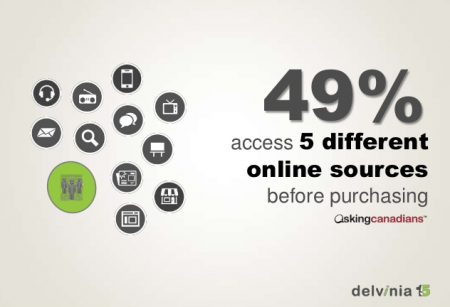 The intersection between digital, social and physical experiences.
The intersection between digital, social and physical experiences.
Forrester recently released their second research report, Meet The Changing Needs Of Connected Customers. This is part two of a three part series. As in the first report, The Unified Customer Experience Imperative, I was asked to discuss what our company has observed in the past few years about the changes in the consumer landscape, and to dissect how brands and companies are struggling to understand how to utilize the multitude of touchpoints their customers have access to.
This report unpacks the following three areas:
- Today’s Customers: Connected Empowered and Distracted
- Companies No Longer Control Customer Processes
- Channel Strategies Give Way To Customer Strategies
Many of the brands we speak to are struggling with all three. However, the second point is a big concern. The report outlines that the marketing funnel has been replaced by customer journeys and brands cannot push or control customers’ path-to-purchase. In my previous post I highlighted the fact that Canadians on average seek out five different online sources before making a purchase decision (Source: AskingCanadians). Of those, the corporate brand is typically only one of those five sources. The others are a mix of Google searches, trusted friends on Facebook and third party mobile apps like the Good Guide.
Moving from a one-size-fits-all process to serving each customer as an individual is a huge undertaking. To tackle this we often advise our clients the following:
- Understand when, where and how: The truth is your brand has no control where your customers are coming from and or where they are going. However, you can understand when, where and how they interact with third party resources, like the Good Guide, and your competitors. Then, design a customer experience strategy on how to address your customers’ journey.
- Make it count: When a customer does interact with your brand during their path-to-purchase make it count. Add value to their journey. Offer a free mobile app as a utility or engaging content that your customers will never forget. Remember, you control this part of the customer experience so don’t blow it.
- Measure the whole journey: If you are not taking steps to measure across the whole path-to-purchase, you better start. Including where your customers are coming from and where they are going. This is hard. But so is life. Technology exists today to do this. Invest in a good dashboard and some great people to start piecing together your big and small data sets. It will pay off.
Good article Steve (the Forrester research is a nice read). I agree, one of the biggest fears Marketers, Brands, Retailers should have is that they no longer control the customer journey. It’s a fragmented, multi-touch, multi-device (often irrational) journey that is purely customer, and not channel, centric. While this poses a major challenge/opportunity for Marketers, it demonstrates that our focus shouldn’t be exclusively on optimizing communications destinations; rather how the entire communications network engages with customers and hopefully gets smarter, and more predictive (if that’s possible), with each subsequent engagement.